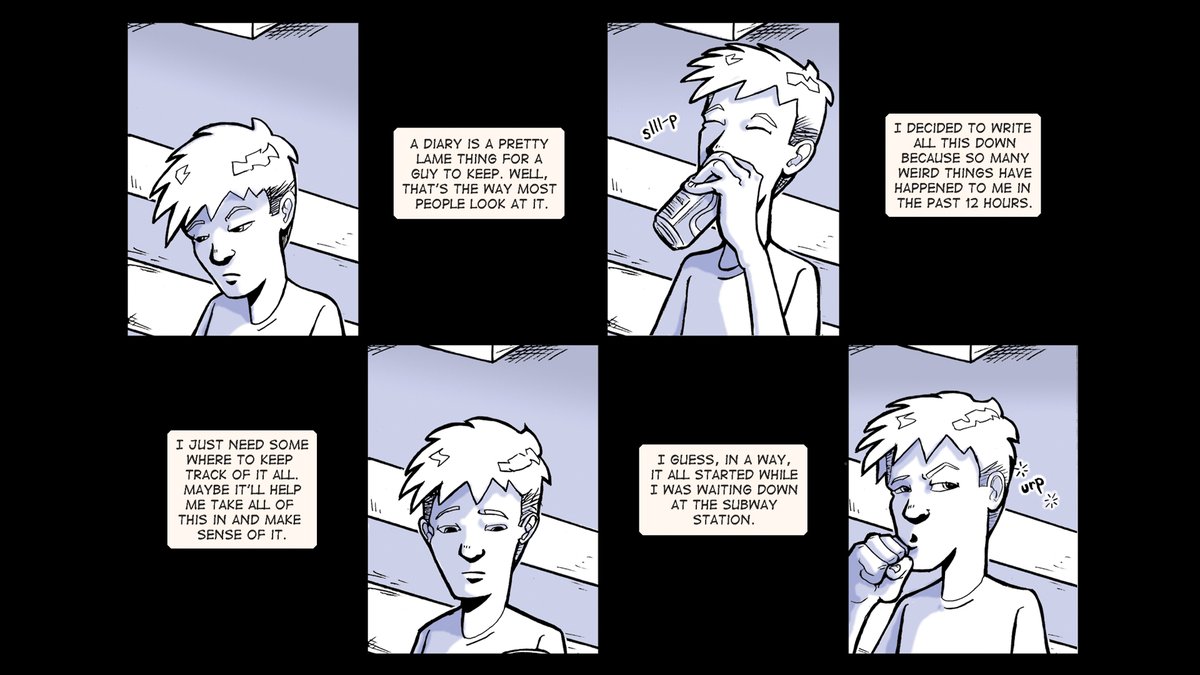
Some recent chatter about portfolios, submissions + 'breaking in'-
It's easy to think only in terms of what _you_ want - the work, the credit, the level up in terms of visibility.
Instead, think about what a publisher wants or needs and the process is clearer.
#ComicsSchool
It's easy to think only in terms of what _you_ want - the work, the credit, the level up in terms of visibility.
Instead, think about what a publisher wants or needs and the process is clearer.
#ComicsSchool
Quality
Is the work you're showing as good or better than the top third of what a publisher is putting out?
They have established people getting stuff done at a base level. Can you raise the bar enough to be worth the effort to bring aboard?
Is the work you're showing as good or better than the top third of what a publisher is putting out?
They have established people getting stuff done at a base level. Can you raise the bar enough to be worth the effort to bring aboard?
Dependability
Have you produced enough that it's clear you can do the work and consistently finish it?
This is where having a completed story/book is a big plus. The more you do, the clearer that gets.
Have you produced enough that it's clear you can do the work and consistently finish it?
This is where having a completed story/book is a big plus. The more you do, the clearer that gets.
Marketability
Are there other qualities inherent in you or the work that may help stand out?
This is harder to pin down and varies wildly, but style, popularity, or identity may all have some part to play in bringing added attention to the work.
Are there other qualities inherent in you or the work that may help stand out?
This is harder to pin down and varies wildly, but style, popularity, or identity may all have some part to play in bringing added attention to the work.
I know it can be frustrating to see movie stars or social media influencers leapfrog into publishing, but the Marketability element opened those doors for them.
Will they have quality and dependability?
Depends on the person.
Will they have quality and dependability?
Depends on the person.
Connection
If someone established says a person and their work is worthy, that can open doors as well but it can also create awkward links between them, especially if the new creator doesn't deliver or the established creator falls out of favor.
If someone established says a person and their work is worthy, that can open doors as well but it can also create awkward links between them, especially if the new creator doesn't deliver or the established creator falls out of favor.
It may sound obvious and you may be too biased, but as an exercise-
Look at your portfolio.
_Really_ look at it.
Would you hire yourself?
Is there enough quality, dependability, and marketability clearly shown to stand out from baseline published work?
If not, what's missing?
Look at your portfolio.
_Really_ look at it.
Would you hire yourself?
Is there enough quality, dependability, and marketability clearly shown to stand out from baseline published work?
If not, what's missing?
If you were the editor, your schedule filled to the brim with deadlines and creative fires to be put out, does the work being shown look like the solution to your problem or does it look like more work about to be heaped on your plate?
Yes, sometimes an editor will go the extra mile to bring someone up to speed and help them understand the form and expectations because they want to broaden that publisher's offerings (which is a form of Marketability), but relying on that as your way in is a longshot at best.
This thread isn't meant to dissuade you from creating or trying to submit your work. Quite the opposite.
I want you to make stuff, finish stuff, and build your skills so you have the best chance possible in a business full of moving targets.
I want you to make stuff, finish stuff, and build your skills so you have the best chance possible in a business full of moving targets.
Build a portfolio that proves you are a creator worth investing in.
Build a pitch that's focused, engaging, and doesn't waste someone's time.
Be the kind of collaborator you want to work with.
It's that easy, and also that difficult.
Build a pitch that's focused, engaging, and doesn't waste someone's time.
Be the kind of collaborator you want to work with.
It's that easy, and also that difficult.
• • •
Missing some Tweet in this thread? You can try to
force a refresh















